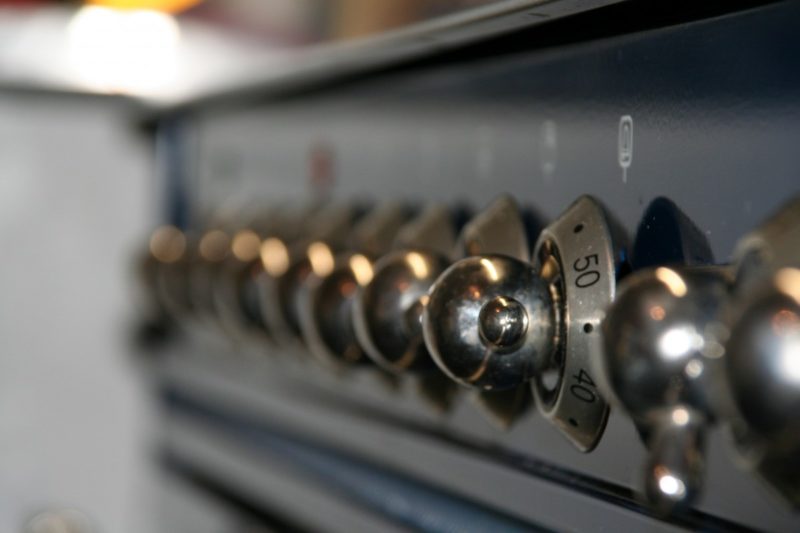Are you wondering how to clean stove top elements? Then, you’re just in the right place; we’ll teach you the steps so you can achieve that wonderful look. Unfortunately, when a typical homeowner attempts to clean the stove top elements, two things usually occur- they either provide bad outcomes or devote significantly more effort to the activity than is required. I know you probably don’t want to go through either of these situations.
Thankfully, you’ve arrived at a spot where you’ll never have to worry about getting poor outcomes again. We believe that you are capable of cleaning more efficiently, which means you don’t have to put in as much work to maintain the cleanliness of your home.

Without a doubt, getting rid of that kitchen filth on various stove elements can be challenging, but the good thing about this is that there is always a better method. In the following few paragraphs, you’ll learn how to clean your stovetop elements. So, let’s start!
Steps To Clean Stove Top Elements
How to clean stove top elements? The most visible parts of your stove top include knobs, grates, and burners. Surface materials and cleaning processes differ according to the materials your stove is made of; it may either come with stainless-steel, powder-coated and glass cooktop finishes.
You have to remember that grease and grime do not adhere as well to cooktop glass as they do to stainless steel and powder-coated surfaces, making cleanup a pleasure if you have this type of stove. With that being said, this article will focus on cleaning powder-coated and stainless steel stove surfaces and cooktop parts.
Step #1. Remove the stovetop elements
When the top elements of your stove, including the knobs, stove grates, and burner caps, are cold enough to handle, it’s best that you remove them.
Make sure, however, that these elements are removed. Now, to clean stubborn oil and filth from stovetop burners and grate, soak them for a few minutes in warm, soapy water. Then, to make cleanup easier, apply it to clean the surface and soak it for as long as possible. Next, in a huge basin or preferably your kitchen sink, soak the cooktop elements in a soapy solution made from anti-grease dish detergent.
Step #2. Sweep out any debris
Clearing any loose dirt from your stovetop is the first step in cleaning it quickly and effectively. If you try to clean with a liquid solution or product before this step, it will most likely lead to a bigger mess, which I’m sure will be harder for you to clean up.
Use a tiny brush and dustpan to sweep up loose particles from the surface. If you don’t have a dustpan, construct one out of a piece of card paper or a brush.
Step #3. Add baking soda and vinegar
This procedure requires baking soda and white vinegar; these are two popular cleaning items. Even the toughest stains and grease on the stovetop won’t be able to stand a chance against their combined cleaning power. This mixture produces the best results when baking soda is sprinkled on top. But, remember to be careful with the powder; it should not be dropped down, especially in the gaps near the burner.
After that, spray white vinegar on top of the baking soda to dampen the surface. You may observe that bubbling or foaming occurs; don’t worry, as this happens typically whenever vinegar and baking soda are combined. Before you should continue, let it settle for at least 15 minutes. If the cleaning solution dries out while it’s standing, re-spray the surface. Learn more by reading “How to clean gas stove burners with baking soda and vinegar?”
Step #4. Scrub and clean the surfaces
Before you begin with this step, you should put on a pair of rubber gloves since things will get dirty. Now, you can proceed to the next step after cleaning away the baking soda and vinegar residue using a damp sponge. As a result of the components absorbing grease from the kitchen, you’ll be bringing it home with you. Therefore, the second round of the cleaning process will require a little more white vinegar and elbow grease.
So, to clean the rest of the stovetop surface, soak a non-abrasive scrubber in a solution of equal parts white vinegar and warm water.
Step #5. Use a clean cloth to dry the surface
After that, wipe the area dry with a clean kitchen towel. As a result, there will be no water traces. Adding a few drops of lemon essential oil to the stovetop and cleaning it with a microfiber towel in circular motions can help it shine even more. And that is how you clean gas stove elements. Regardless, after cleaning, make sure to check other parts of your stove, especially the gas. Learn how to tell if your stove is leaking gas. Take your time to learn from this article.
It’s A Wrap!
It’s as simple as that, my friends. With the brunt splashes, spills, and stains, your stovetop is probably the hardest-working surface in your kitchen. The issue is that if you utilize the burners to their greatest capacity, spillage will be challenging to clean up.
You should clean up spills as soon as possible, and you should set aside time each week to undertake a more thorough scrubbing. For a daily wipe-down during your usual kitchen cleaning, all you need is a spritz of cleaner and a swipe of a moist cloth.
Keeping your stovetop clean of oil and food buildup takes only a few minutes each day. Weekly stovetop cleaning, on the other hand, demands more effort. Well, you’ve already known how to clean stove top elements. Until here, my friends! For more stove articles, here is one about how to clean burnt stove top.
